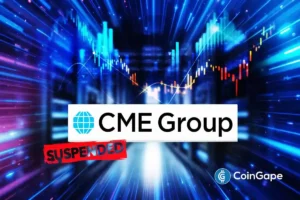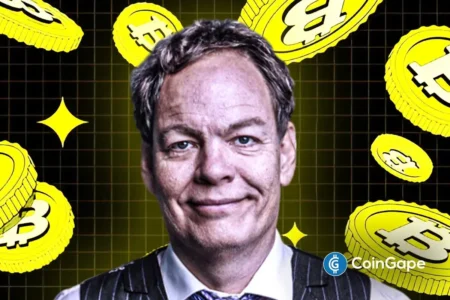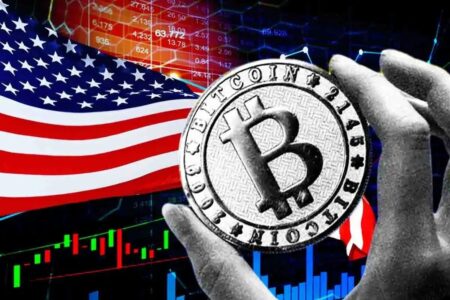Tether’s USDT Downgraded by S&P Global Ratings: What It Means for the Stablecoin Market
S&P Global Ratings has made headlines by downgrading Tether’s USDT, citing significant worries about its exposure to volatile assets, notably Bitcoin. This decision has sparked discussions in the financial community regarding the stability of stablecoins and the risks associated with their reserves. As the largest stablecoin in circulation, with a market value of around $184 billion, USDT’s fiscal health is crucial not just for its users but for the broader cryptocurrency ecosystem. In this article, we delve into the details behind the rating downgrade, the implications it has for Tether and its stakeholders, and the ongoing debate on the transparency of stablecoins.
Reserves and Risks: The Core Issues Behind S&P’s Downgrade
S&P Global Ratings has revised Tether’s score from “constrained” to “weak," a move that reflects heightened risks around the company’s reserve strategy. USDT’s reserves comprise a mix of both high-risk assets, including Bitcoin, corporate bonds, and secured loans, and lower-risk options such as U.S. Treasury bills. In a transparency report, Tether revealed it holds over 87,728 BTC, which is a significant increase from previous figures. This reliance on Bitcoin, which currently makes up 5.4% of USDT’s total reserves, has led analysts to express concerns about the stablecoin’s ability to maintain its dollar peg in the event of a market downturn. A plunge in Bitcoin’s value could jeopardize Tether’s ability to remain fully collateralized, triggering further ripple effects within the crypto market.
The Fallout for Tether and the Broader Stablecoin Market
The implications of S&P’s rating adjustment are multi-faceted. A downgrade could lead to increased scrutiny from regulators and investors alike, diminishing confidence in USDT and potentially forcing Tether to reevaluate its reserve composition. Analysts Rebecca Mun and Mohamed Damak warned that if Bitcoin prices were to plummet significantly, USDT could end up undercollateralized. Such a scenario would threaten the fundamental principle of stability that underpins stablecoins, causing users to lose faith in Tether’s capacity to hold its value against the dollar. With the increasing regulatory push for transparency in the cryptocurrency market, Tether’s decisions will be under close watch.
Tether’s Defense: Counterarguments and Commitment to Compliance
Responding to the downgrade, Tether’s Chief Technology Officer, Paolo Ardoino, expressed his discontent via social media, stating, “We wear your loathing with pride.” Ardoino emphasized that traditional rating agencies have often failed to gauge true business risks, citing examples of companies that were rated highly yet still defaulted. He argued that Tether operates as the world’s first overcapitalized financial firm devoid of "toxic reserves." According to Ardoino, despite the traditional financial system’s pitfalls, Tether remains extremely profitable, reflecting a demand for alternative financial models that can withstand volatility.
Transparency and Accountability: The Need for Full Audits
A point of contention in this discussion revolves around Tether’s willingness to disclose its reserve details fully. S&P noted that Tether has historically released its financials through attestations rather than comprehensive audits. This approach limits the visibility investors have into the firm’s reserve structure and asset quality. Although Tether holds a substantial amount in U.S. Treasury bills—positioning itself as the 17th largest holder globally—the presence of high-risk assets, such as Bitcoin and secured lending, raises questions about the overall safety of the reserves that back USDT. As regulatory frameworks around cryptocurrency tighten, the demand for full transparency and rigorous audits will likely be paramount.
The Future of Stablecoins: Navigating an Evolving Landscape
As the cryptocurrency ecosystem matures, the volatility of underlying assets like Bitcoin and Ethereum poses an ongoing challenge for stablecoins. With Tether’s recent downgrade, market participants will be compelled to reassess their exposure to USDT and consider alternatives. Other stablecoins, such as USD Coin (USDC) and Binance USD (BUSD), may find opportunities to capture market share by aligning themselves with stricter transparency protocols and lower-risk asset reserves. Observing how Tether adapts its reserve strategy in light of S&P’s recent downgrade will offer valuable insights into the future trajectory of stablecoins in an ever-evolving digital finance landscape.
Conclusion: Balancing Risks and Stability in Crypto Finance
In summary, S&P Global Ratings’ downgrade of Tether’s USDT raises significant questions regarding the stability and transparency of one of the largest stablecoins in circulation. As concerns about the asset mix and collateralization loom large, the potential impact on user confidence and market dynamics is profound. Tether’s response, focusing on profitability and the search for an alternative financial model, suggests a belief in its capacity to navigate these challenges. However, as the landscape of stablecoins continues to evolve, achieving a balance between risk and stability will be crucial for Tether and its competitors. Moving forward, a commitment to transparency, robust management of reserves, and alignment with regulatory requirements will dictate the resilience of stablecoins in an increasingly scrutinized financial environment.
















